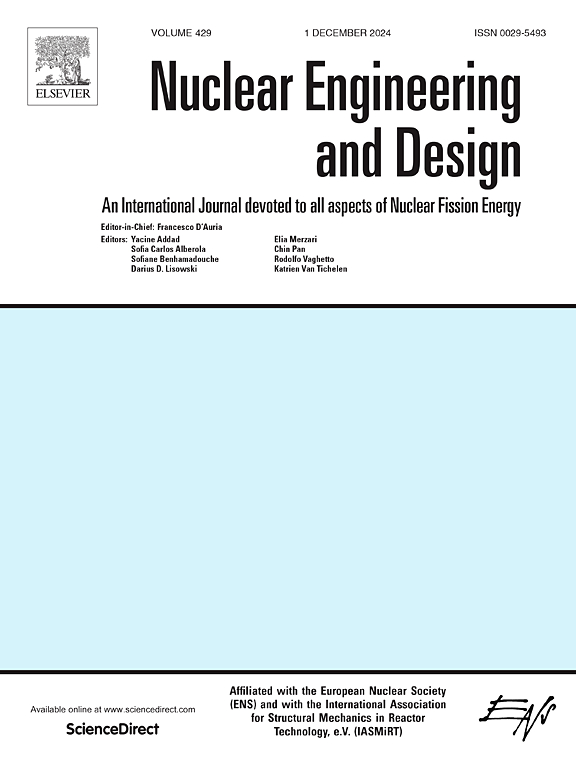A comprehensive analysis of neutronic properties of annular dispersed particle fuel
IF 1.9
3区 工程技术
Q1 NUCLEAR SCIENCE & TECHNOLOGY
引用次数: 0
Abstract
This work made a comprehensive analysis of the neutronic performance of annular dispersed particle fuel (ADF), and the results were compared with annular ceramic fuel (ACF), cylindrical dispersed particle fuel (CDF), and cylindrical ceramic fuel (CCF). The four types of cells are simulated by in-house code, and then the effective multiplication factor, neutron flux distribution, depletion characteristics, nuclides composition variation, and temperature coefficient of each fuel rod are compared and analyzed. Moreover, the characteristics of fuel assembly consisting of the four types of fuels are analyzed, including the effective multiplication factor, normalized pin power distribution, etc. The calculation results show that ADF has obvious advantages in all the indicators mentioned above. The calculation and analysis conducted in this paper could compare the advantages of the new annular dispersed particle fuel rod over the traditional fuel rod, which provides a certain reference for the application of the new fuel rod in engineering.
求助全文
约1分钟内获得全文
求助全文
来源期刊

Nuclear Engineering and Design
工程技术-核科学技术
CiteScore
3.40
自引率
11.80%
发文量
377
审稿时长
5 months
期刊介绍:
Nuclear Engineering and Design covers the wide range of disciplines involved in the engineering, design, safety and construction of nuclear fission reactors. The Editors welcome papers both on applied and innovative aspects and developments in nuclear science and technology.
Fundamentals of Reactor Design include:
• Thermal-Hydraulics and Core Physics
• Safety Analysis, Risk Assessment (PSA)
• Structural and Mechanical Engineering
• Materials Science
• Fuel Behavior and Design
• Structural Plant Design
• Engineering of Reactor Components
• Experiments
Aspects beyond fundamentals of Reactor Design covered:
• Accident Mitigation Measures
• Reactor Control Systems
• Licensing Issues
• Safeguard Engineering
• Economy of Plants
• Reprocessing / Waste Disposal
• Applications of Nuclear Energy
• Maintenance
• Decommissioning
Papers on new reactor ideas and developments (Generation IV reactors) such as inherently safe modular HTRs, High Performance LWRs/HWRs and LMFBs/GFR will be considered; Actinide Burners, Accelerator Driven Systems, Energy Amplifiers and other special designs of power and research reactors and their applications are also encouraged.
 求助内容:
求助内容: 应助结果提醒方式:
应助结果提醒方式:


